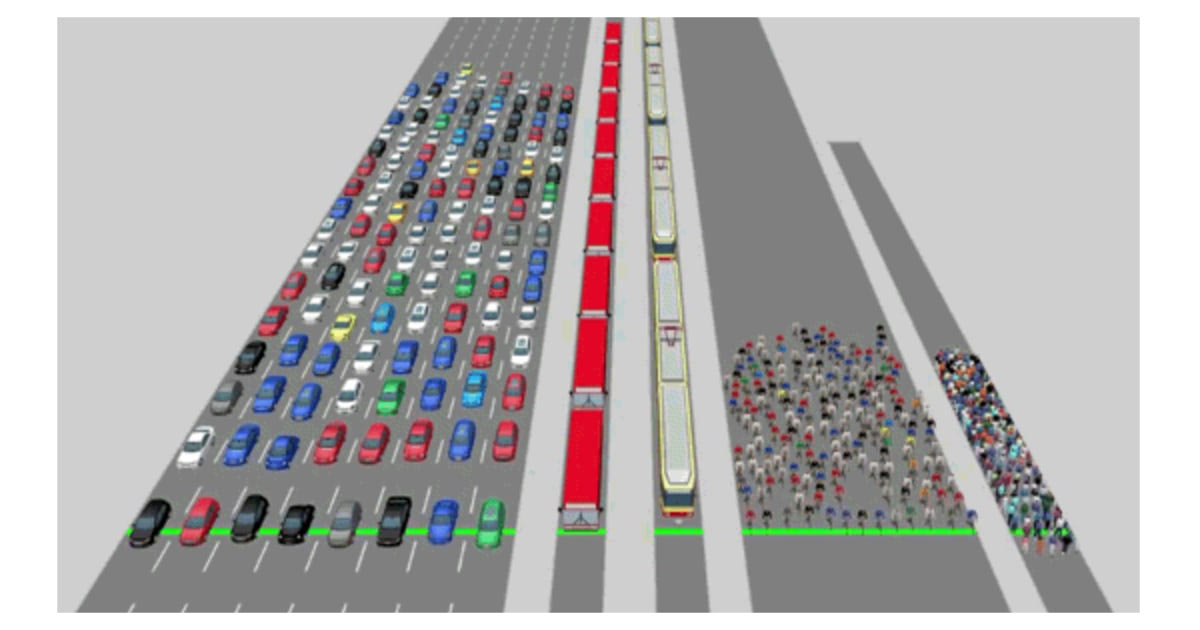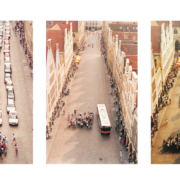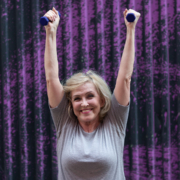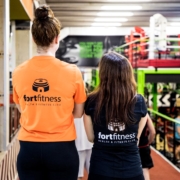It’s time we recognised that where we live determines a lot about our physical fitness
Unless one suffers from a disease, a lack of physical fitness is almost always seen as a personal failing. In this article, we want to dispel this myth by highlighting how where we live impacts our ability to engage in a more active lifestyle. The infrastructure available in our towns to make active commuting easier (active commuting involves commuting either by walking or cycling), the way our streets are designed, the accessibility of local spaces to the public, all make significant, lasting impacts on how people navigate their lives. Of course, there’s no question that engaging in a healthier, more active lifestyle ultimately depends on our willpower, but make no mistake: Where we live is going to make a big impact, especially over time.
From fires in America and Australia to floods in Germany and China, the importance of reducing carbon emissions has become clearer than ever (to most of us). To achieve this, we need modes of transportation that are friendlier to the environment, but green modes of transport are crucial for another reason: They’re also friendlier to us.
The benefits behind car-free (or at least, car-light) cities are vast; In this article, we’ll go over why we need to start paying more attention to the ways we are shaping our cities.
WE SHAPE CITIES, AND THEN CITIES SHAPE US
In 2019, the highest proportion of obese men and women was recorded in Malta. But a slew of studies have shown that obesity, which is often a direct consequence of lack of physical activity, is not just a personal failing, it’s also a result of infrastructure.
The design of our cities has a lasting impact on how we move and participate in everyday life, influencing our chances of experiencing poor health outcomes like heart disease, diabetes, and cancer.
Transitioning from conventional to electric vehicles is necessary for our climate, but it’s also time we recognised localities need to be designed around people, not cars, and that for people, movement is the language of life.
The introduction of trees, sunshades/shade structures, pedestrianization, eScooter stands, sidewalks, cycling lanes, benches, parking zones, and park and rides are some of the best investments we can make today to guarantee greater returns in the future.
Read more on this:
• Does Urban Design Influence Physical Activity in the Reduction of Obesity?
• The Influence of Urban Design and Planning on Physical Activity
Research has also shown that the presence of pedestrian infrastructure directly increases people’s participation in active commute – mainly in the form of walking, cycling, and mass transit significantly, thereby improving their health over time.
MOVEMENT IS THE MOST POTENT YET UNDERUTILISED ANTIDEPRESSANT
Across the EU, there has been an alarming 13% rise in mental health conditions and substance use disorders in the last decade alone across all ages. Researchers explain that this crisis is concurrent with the increased ownership of smartphones, increase in digital media usage and consequent disconnection from each other, our natural environment, and our bodies.
Exercising starts a biological cascade of events that results in many health benefits, such as protecting against heart disease and diabetes, improving sleep, and lowering blood pressure. High-intensity exercise releases the body’s feel-good chemicals called endorphins, resulting in the “runner’s high” that joggers report. But for most of us, the real value is in low-intensity exercise sustained over time.
Read more about this here:
- https://www.health.harvard.edu/mind-and-mood/exercise-is-an-all-natural-treatment-to-fight-depressio…
- https://www.ncbi.nlm.nih.gov/pmc/articles/PMC474733/
We need to take a step back from our screens and take a walk outside. In order to make this happen, we need to make our outdoors a lot more welcoming. Most studies and trials showed an improvement in mental well-being: compared with exercising indoors, exercising in natural environments was associated with greater feelings of revitalisation, increased energy and positive engagement, together with decreases in tension, confusion, anger and depression.
IT’S NOT ‘EITHER-OR’; IT’S ‘BOTH’
Fort Fitness is not suggesting we throw away the medicine and just exercise instead, the point isn’t to find out whether exercise or medicine is better, but to emphasise that we need both, and the one won’t work without the other. Movement is vital for maintaining “mental” fitness.
On this note, it’s also important to keep in mind that there’s no ‘mental’ and ‘physical’ health – there’s just health. The body of literature showcasing the cruciality of movement, be it in the form of exercise, walking or wandering around is vast. Regular participation in exercise decreases overall levels of tension, elevates and stabilises mood, improves sleep, and improves self-esteem. Even five minutes of aerobic exercise can stimulate anti-anxiety effects.
IT’S TIME TO DRIVE CARS OUTSIDE OUR LOCALITIES
Malta has a staggering car ownership rate of 766 motor vehicles per 1,000 people. It’s time to bring that number down. Opponents of initiatives designed to hinder car usage often decry these visions of a car-free future as urbanist fantasies that will cause more congestion as well as harm to businesses by cutting off their customers’ access. There’s extensive research that undermines both of those arguments. Walkable streets tend to benefit small businesses, and the principles of induced demand appear to work in reverse: traffic doesn’t get worse, because people find alternative ways to navigate an area that’s unwelcoming to cars. With a serious investment in multi-story parking lots complemented with initiatives such as car-free zones and other measures to dissuade parking in streets, this change is possible.

REMOTE WORK IS HERE TO STAY
Our relationship with technology definitely needs work, but technology is by no means a downside. You won’t find many people who will say good things about the Covid-19 pandemic, but if there is one silver lining to this event, it’s that we have learned that remote working not only does work, it works brilliantly. Data has drawn a clear picture in favour of increased remote working, showing increased productivity, as well as an emphasis on work done instead of hours worked.
One of the biggest advantages to remote working – where possible – is the ability to skip commuting altogether. As more of our jobs become compatible with remote working, shifting away from private cars will become easier.
2021 vindicated remote working. Now, 85% of managers believe that having teams with remote workers will become the new norm.
REMEMBER: MOVEMENT IS THE LANGUAGE OF LIFE
The European Mobility Week reminds us that we need to take seriously the introduction of changes that encourage walking, cycling, exercise and outdoor activities in our localities. It’s time we reconnect with our bodies, our environment, and the world outside our screens.






